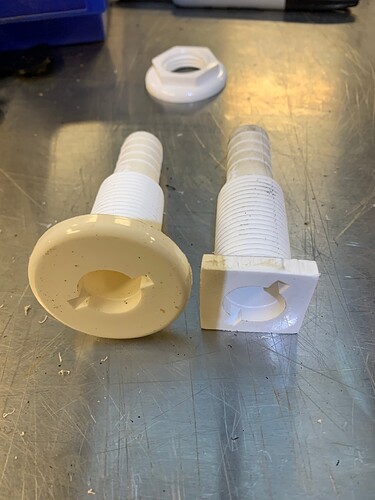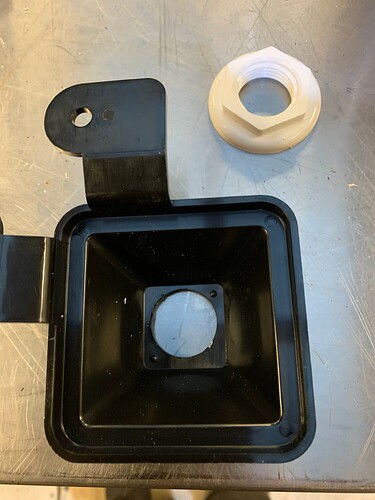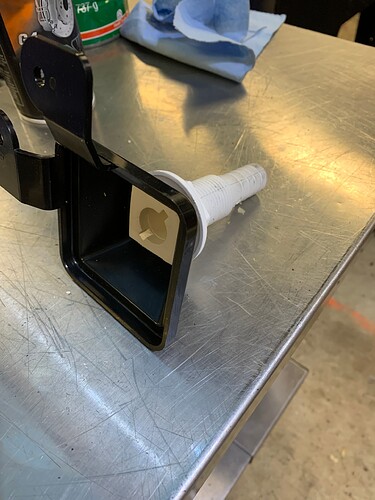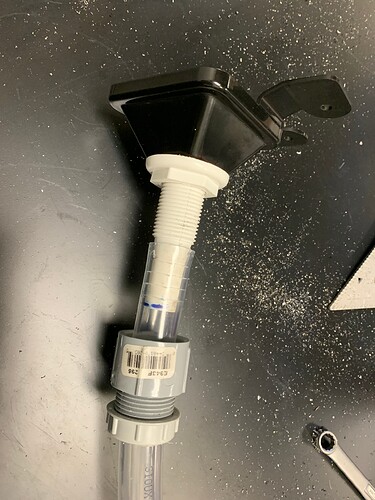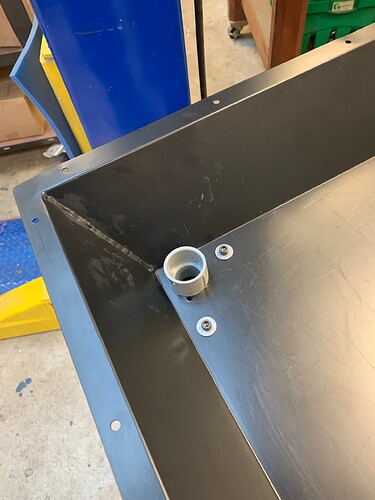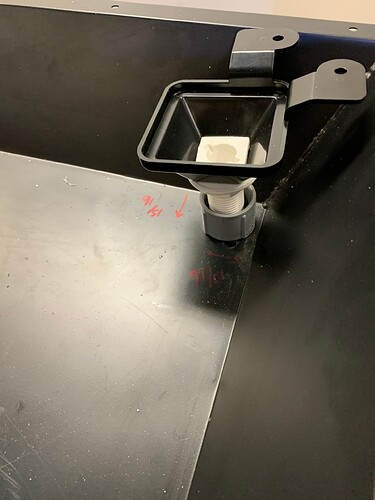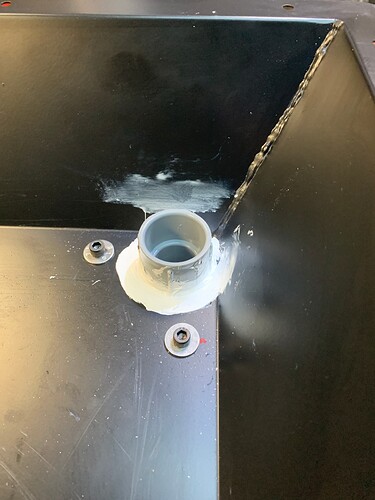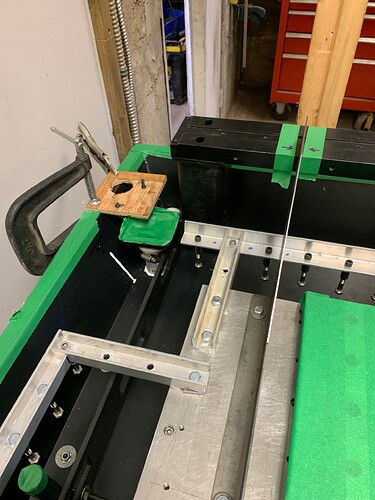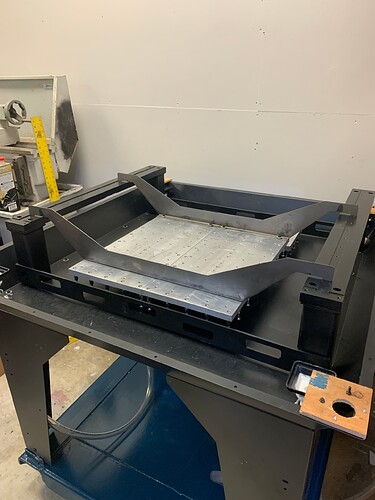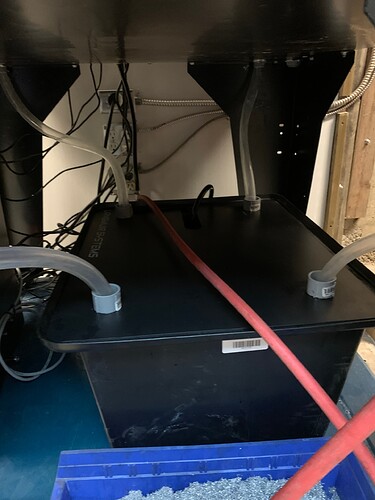There are a lot of comments on the forum about the small drains, and I did not like the design with two 90 degree bends inside the concrete which would make it quite hard to clear if plugged. My goal was to make the drains ¾” in diameter as well as a straight a shot as possible through the concrete.
I ended up using boat thru-hull fittings, cutting them square and drilling out a hole in the bottom of the existing drains to accommodate. I relocated the drains, the fronts are just a bit more inwards, but the rears are quite a bit inward. That eliminates any conflicts with hitting the Y axis post, as well as they are easier to clean since you can see them. It allows for a straight shot through the bottom of the pan. I found a 1” PVC schedule 40 male terminal adapter makes a great “grommet”, where the ¾” tubing is well supported.
I supported them with a plywood frame when pouring. The trick is to check and double check that the drains are basically the same level as the target level on the baseplate.
This gives four ¾” clear drains that come from each corner. I drilled additional holes in the top of the coolant tube to accommodate, and used the PVC adaptors again as ways to hold the hoses in place, and they provide a smoot surface with no sharp edges…
The drain hose is 3/4 clear flex hose’
I used some plywood to position and level the drains to their new positions - it took a bit of work to make sure they were level with the targeted epoxy level with the baseplate.
And finially the drains run into the coolant tub through each corner - I used 1" conduit terminators so it gives a support to the hose. The fun part is you can see the coolant as it runs down the hose, but it will eventually fog up …
